Global Last Mile Delivery Market is estimated to be worth USD 136.4 Billion in 2022 and is projected to grow at a CAGR of 9.2% market size of market and the forecast period is 2023 to 2032.
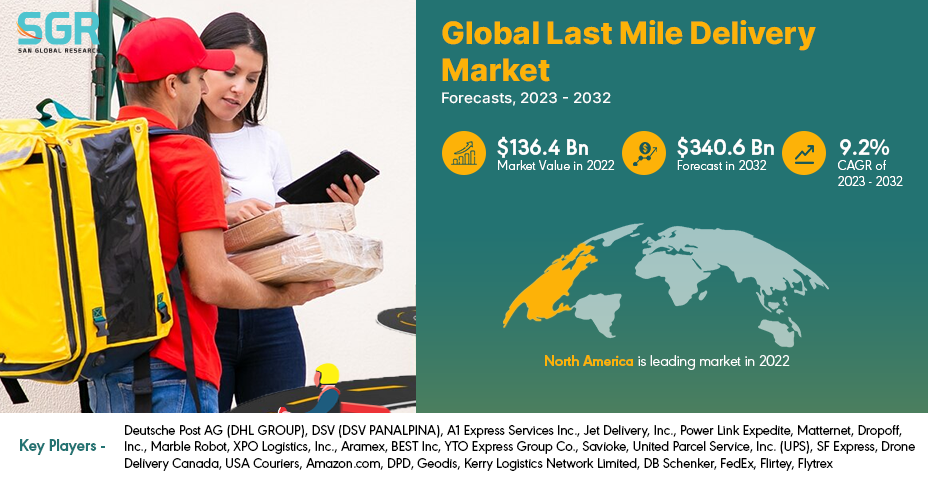
The report analyzes and forecasts the market size, in terms of value (USD Billion), for the market. The report segments the market and forecasts it by solution, by Application, by payload weight, by range and by region/country.
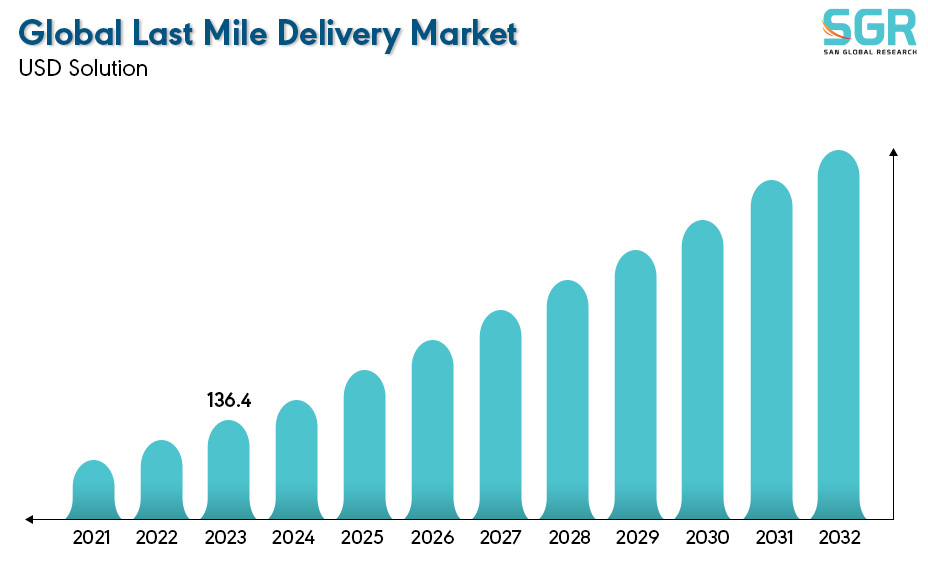
The global last mile delivery market has experienced significant transformation in recent years, driven by the rapid growth of e-commerce and changing consumer expectations. Last mile delivery, the final leg of the supply chain that ensures goods reach the end consumer, has become a focal point for innovation and efficiency. With the surge in online shopping, companies are investing in advanced logistics technologies, including route optimization algorithms, real-time tracking systems, and autonomous delivery vehicles, to streamline the last mile process. Urbanization, coupled with the demand for same-day or next-day deliveries, has led to the emergence of diverse delivery solutions, including drone deliveries, electric bikes, and crowd-sourced delivery networks. The market is also witnessing increased collaboration between traditional retailers, e-commerce giants, and logistics providers to enhance the speed and reliability of last mile deliveries. Regulatory frameworks, sustainability concerns, and the need for cost-effective solutions are shaping the competitive landscape of the global last mile delivery market, making it a pivotal element in the broader logistics ecosystem.
.jpg)
Region wise Comparison:
The last mile delivery market in North America reflects the region's dominance in e-commerce and its commitment to technological advancements in logistics. With major players like Amazon spearheading innovations such as drone deliveries and electric delivery vans, the North American last mile delivery market is marked by intense competition and a focus on reducing delivery times. The vast geographical expanse and diverse consumer preferences have prompted companies to invest in smart logistics solutions, predictive analytics, and sustainable delivery practices, contributing to the market's dynamic growth.
Europe's last mile delivery market is characterized by a sophisticated infrastructure and a robust e-commerce landscape. The region emphasizes sustainable and eco-friendly delivery solutions, with a growing adoption of electric vehicles, cargo bikes, and urban micro-fulfillment centers. European countries prioritize efficient last mile logistics, considering factors like traffic congestion and stringent emission regulations. Collaborative efforts between retailers, logistics providers, and governments contribute to a well-integrated and technologically advanced last mile delivery ecosystem.
.jpg)
The Asia Pacific last mile delivery market is witnessing robust growth driven by the region's thriving e-commerce sector and a dense urban population. Countries like China and India are at the forefront of adopting innovative delivery methods, including autonomous vehicles and contactless delivery options. The diversity of consumer preferences across the Asia Pacific region has led to a varied landscape of delivery solutions, with a focus on quick, reliable, and cost-effective services. Government initiatives to improve logistics infrastructure further contribute to the expansion of the last mile delivery market in this region.
Latin America's last mile delivery market is evolving as e-commerce gains traction across the region. Challenges such as diverse topography, infrastructural limitations, and varying economic conditions influence the adoption of delivery solutions. Companies in Latin America are exploring creative strategies, including partnerships with local retailers and the use of mobile technology, to overcome logistical hurdles. The market's growth is tied to the region's increasing online retail activities and a growing middle class with changing consumer habits.
The last mile delivery market in the Middle East is characterized by rapid urbanization and a burgeoning e-commerce sector. Countries like the United Arab Emirates are investing in smart city initiatives, influencing the adoption of advanced last mile delivery technologies. Electric vehicles, drones, and automated locker systems are becoming integral to the region's delivery landscape. The Middle East's strategic location as a global trade hub further amplifies the importance of efficient last mile delivery solutions.
In Africa, the last mile delivery market is navigating challenges such as underdeveloped infrastructure and vast rural areas. However, the increasing use of mobile technology and innovative delivery models, such as crowd-sourced delivery networks and bike couriers, is reshaping the landscape. Governments and private entities are collaborating to enhance logistics infrastructure, with a focus on reaching remote areas. The growth of e-commerce and rising consumer expectations are driving investments in improving last mile delivery services across the continent.
Australia's last mile delivery market reflects the country's unique geography and concentration of urban centers. The market is characterized by a strong emphasis on sustainable practices, with electric vehicles gaining popularity in urban areas. Australia's vast distances have prompted the exploration of drone delivery technologies for remote locations. The market also sees collaborations between retailers and delivery providers to optimize routes and enhance the efficiency of last mile logistics, catering to the demands of the digitally connected Australian consumer.
.jpg)
Segmentation:
The Global Last Mile Delivery Market is segmented by solution, by Application, by payload weight, by range and by region/country.
By Solution:

Based on the Solution, the Global Last Mile Delivery Market is bifurcated into Aerial Delivery Drones and Ground Delivery Drones – where Ground Delivery Drones is dominating and ahead in terms of share.
Ground delivery drones, also known as autonomous ground vehicles (AGVs) or ground-based robots, are playing a pivotal role in reshaping the landscape of the global last mile delivery market. These compact, wheeled robots are designed to navigate sidewalks and streets, carrying packages directly to the doorstep of consumers. Ground delivery drones offer a practical solution for last mile logistics, especially in urban and suburban areas, where they can efficiently navigate through pedestrian traffic and interact safely with the surrounding environment. Equipped with advanced sensors, cameras, and artificial intelligence, these drones can avoid obstacles, follow designated routes, and adapt to varying terrains.
By Application:
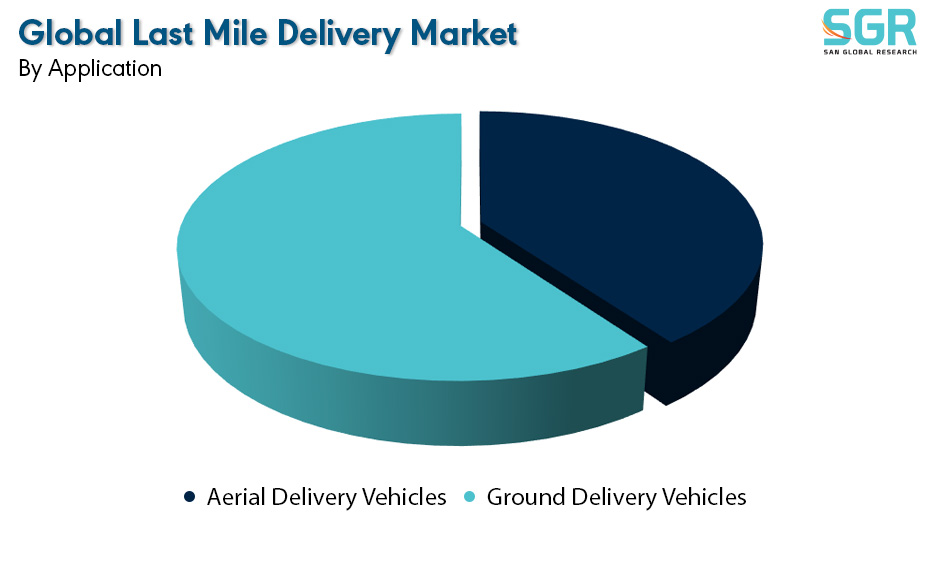
Based on the Application, the Global Last Mile Delivery Market is bifurcated into Aerial Delivery Vehicles & Ground Delivery Vehicles – where Ground Delivery Vehicles is dominating and ahead in terms of share.
By Payload Weight:
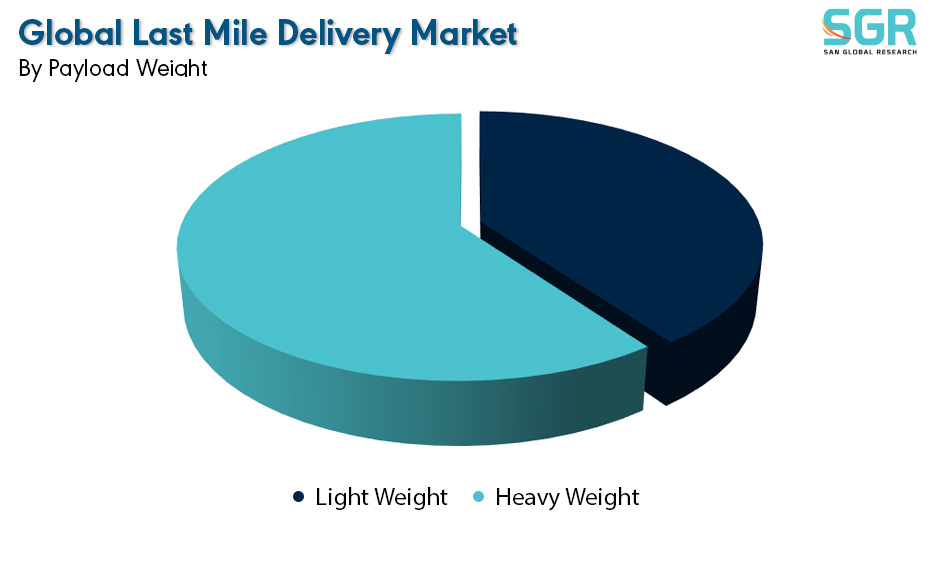
Based on the Payload Weight, the Global Last Mile Delivery Market is bifurcated into Light Weight & Heavy Weight – where Light Weight is dominating and ahead in terms of share
By Range:
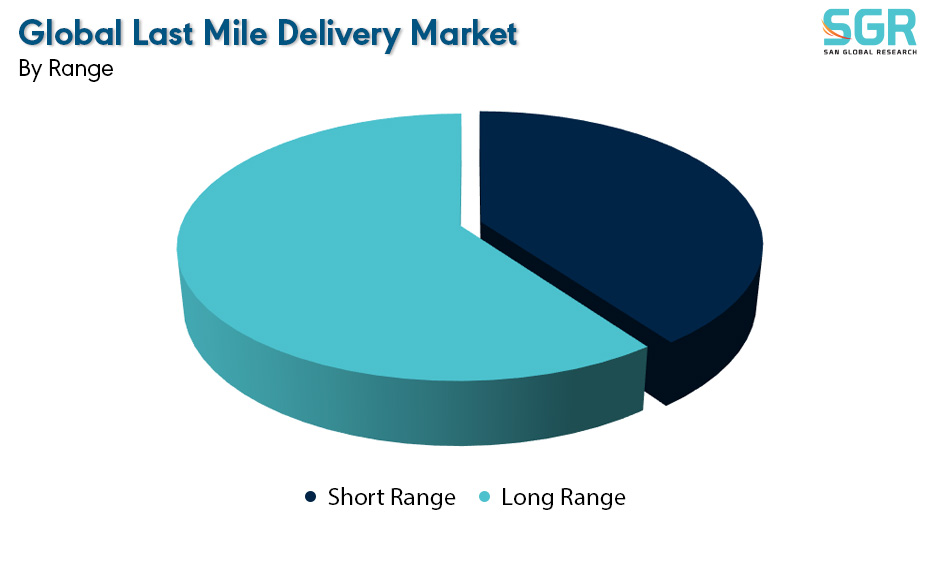
Based on the Range, the Global Last Mile Delivery Market is bifurcated into Short Range & Long Range – where Short Range is dominating and ahead in terms of share
On the basis of region
• North America
• Europe
• Asia Pacific
• South America and
• Middle East and Africa
In 2022, North America is anticipated to dominate the Global Last Mile Delivery Market with market revenue of XX USD Million with a registered CAGR of XX%.
Key Players:
The key market players operating in the Global Last Mile Delivery Market include
• Deutsche Post AG (DHL GROUP)
• DSV (DSV PANALPINA)
• A1 Express Services Inc.
• Jet Delivery, Inc.
• Power Link Expedite
• Matternet, Dropoff, Inc.
• Marble Robot
• XPO Logistics, Inc.
• Aramex
• BEST Inc
• YTO Express Group Co.
• Savioke,
• Amazon.com
• DPD
• Geodis
• Kerry Logistics Network Limited
Drivers:
Growing sector across the globe
The global last mile delivery market is propelled by several key drivers that collectively contribute to its rapid growth and evolution. One of the primary drivers is the surge in e-commerce activities, as consumers increasingly turn to online shopping, necessitating swift and reliable last mile delivery services. The demand for same-day and next-day deliveries has intensified, prompting companies to invest in advanced logistics technologies to meet customer expectations. Urbanization and population density are also driving the need for innovative last mile solutions to navigate congested city environments efficiently. The evolving consumer mindset, characterized by a preference for convenience and personalized delivery experiences, further fuels the demand for flexible and customer-centric last mile services. Advancements in technology, including the use of drones, autonomous vehicles, and smart route optimization, are pivotal drivers, enhancing the speed, accuracy, and cost-effectiveness of last mile deliveries. Additionally, the influence of the COVID-19 pandemic has accelerated the adoption of contactless and automated delivery solutions, adding momentum to the transformation of the global last mile delivery market.
Opportunity:
Evolving Market
The global last mile delivery market presents a plethora of opportunities driven by the dynamic convergence of technology, changing consumer behaviors, and the evolving landscape of commerce. One significant opportunity lies in the expansion of e-commerce and the continuous growth of online retail, prompting a surge in demand for efficient and timely last mile delivery services. The integration of advanced technologies, such as artificial intelligence, robotics, and route optimization algorithms, offers opportunities for companies to enhance operational efficiency and reduce delivery costs. As the market embraces sustainability trends, there is an opportunity for the development and implementation of eco-friendly last mile solutions, including electric vehicles and sustainable packaging practices. Collaboration between logistics providers and retailers, as well as partnerships with technology firms, creates avenues for innovation and improved customer experiences. The global last mile delivery market is also poised for growth in emerging markets, where rising middle-class populations and increased internet penetration contribute to the expansion of e-commerce and last mile delivery services. Overall, the industry's transformative trajectory presents a range of opportunities for businesses to capitalize on, from technological advancements to strategic partnerships, to meet the evolving demands of the modern consumer.
| Report Attribute | Details |
| Market Value in 2022 | 136.4 Billion |
| Forecast in 2032 | 340.6 Billion |
| CAGR | CAGR of 9.2% from 2024 to 2032 |
| Base Year of forecast | 2023 |
| Historical | 2019-2022 |
| Units | Revenue in USD Billion and CAGR from 2023 to 2032 |
| Report Coverage | Revenue forecast, Industry outlook, competitive landscape, growth factors, and trends |
| Segments Scope | By Solution, By Application, By Payload Weight, By Range |
| Regions Covered | North America, Europe, Asia Pacific, SA and MEA |
| Key Companies profiled | Deutsche Post AG (DHL GROUP), DSV (DSV PANALPINA), A1 Express Services Inc., Jet Delivery, Inc., Power Link Expedite, Matternet, Dropoff, Inc., Marble Robot, XPO Logistics, Inc., Aramex, BEST Inc, YTO Express Group Co., Savioke, United Parcel Service, Inc. (UPS), SF Express, Drone Delivery Canada, USA Couriers, Amazon.com, DPD, Geodis, Kerry Logistics Network Limited, DB Schenker, FedEx, Flirtey, Flytrex |

 Description
Description
 Table of Content
Table of Content
 Gera Imperium Rise,
Gera Imperium Rise,  +91 9209275355
+91 9209275355


